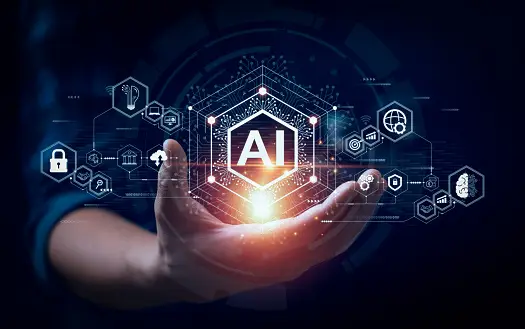
In recent years, integrating AI into robotics has revolutionized the field, opening up new possibilities and pushing the boundaries of what robots can achieve. Researchers have made significant advancements in perception, decision-making, and human-robot interaction by combining artificial intelligence (AI) algorithms with robotic systems. This article will explore the innovations and research trends in AI-powered robotics.
Enhanced Perception: Giving Robots Senses
One of the key areas where AI has made a tremendous impact on robotics is enhancing robots’ perception abilities. Traditional robots relied on pre-programmed instructions and sensors with limited capabilities. However, AI algorithms allow robots to perceive and interpret the environment more effectively. Computer vision algorithms enable robots to recognize objects, track their movements, and understand complex scenes. This enhanced perception allows robots to navigate autonomously, manipulate objects precisely, and interact with humans more naturally and intuitively.
Learning and Adaptation: Robots that Learn from Experience
AI-powered robots have the remarkable ability to learn from their experiences and adapt their behavior accordingly. Machine learning techniques, such as deep learning and reinforcement learning, enable robots to acquire new skills and improve their performance over time. By training robots on large datasets or through trial and error, they can learn complex tasks, such as grasping objects, assembling components, or even playing games. This learning and adaptation capability makes robots more versatile and adaptable to different environments and tasks.
Collaborative Robotics: Humans and Robots Working Together
Collaborative robotics, also known as cobots, is an emerging field that focuses on enabling robots to work alongside humans collaboratively. AI plays a crucial role in making these interactions safe and efficient. AI algorithms can analyze human gestures, speech, and intentions to facilitate seamless communication and collaboration between humans and robots. This opens up various applications, from industrial settings where robots assist workers in assembly lines to healthcare environments where robots support medical professionals in tasks like patient care or surgery. The combination of AI and robotics brings the potential for increased productivity and improved safety in various domains.
Ethical and Explainable AI: Addressing Concerns
As AI becomes more pervasive in robotics, ethical considerations and the need for explainable AI are gaining prominence. Researchers are working towards developing AI algorithms that are transparent, accountable, and aligned with human values. Explainable AI techniques aim to provide understandable explanations for the decisions made by AI-powered robots, ensuring transparency and reducing the risk of biases or unethical behaviors. These efforts are crucial in building trust and acceptance of AI-powered robots in society.
Robots in Everyday Life: From Assistive Robots to Social Robots
AI-powered robots have the potential to transform various aspects of your daily lives. Assistive robots can help individuals with disabilities or older adults to perform tasks independently, enhancing their quality of life. Social robots are designed to engage and interact with humans in social settings, such as education, entertainment, or companionship. These robots rely on AI algorithms to understand human emotions, recognize facial expressions, and engage in natural conversations. As AI advances, you can expect robots to integrate more into your homes, workplaces, and communities.
Conclusion
Integrating artificial intelligence into robotics has ushered in a new era of innovation and AI research. The enhanced perception, learning capabilities, collaborative potential, and ethical considerations brought by AI-powered robots are transforming industries and shaping the future of robotics. As AI grows, you can expect even more remarkable advancements in robotics, enabling robots to perform increasingly complex tasks, interact seamlessly with humans, and contribute to various aspects of your lives. The synergy between AI and robotics holds immense promise for creating intelligent, adaptable, and socially aware robots that can positively impact society.
